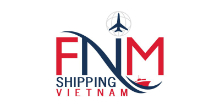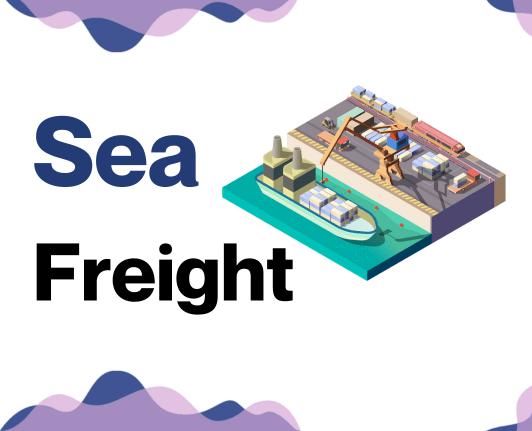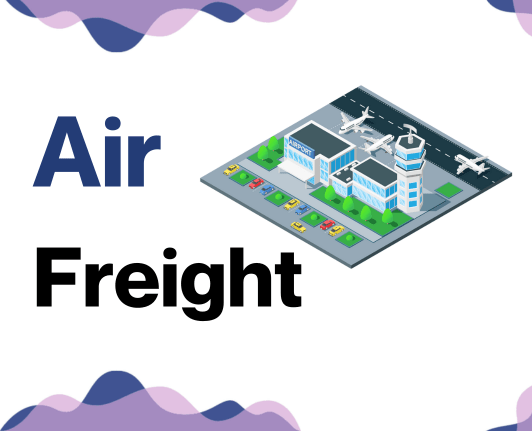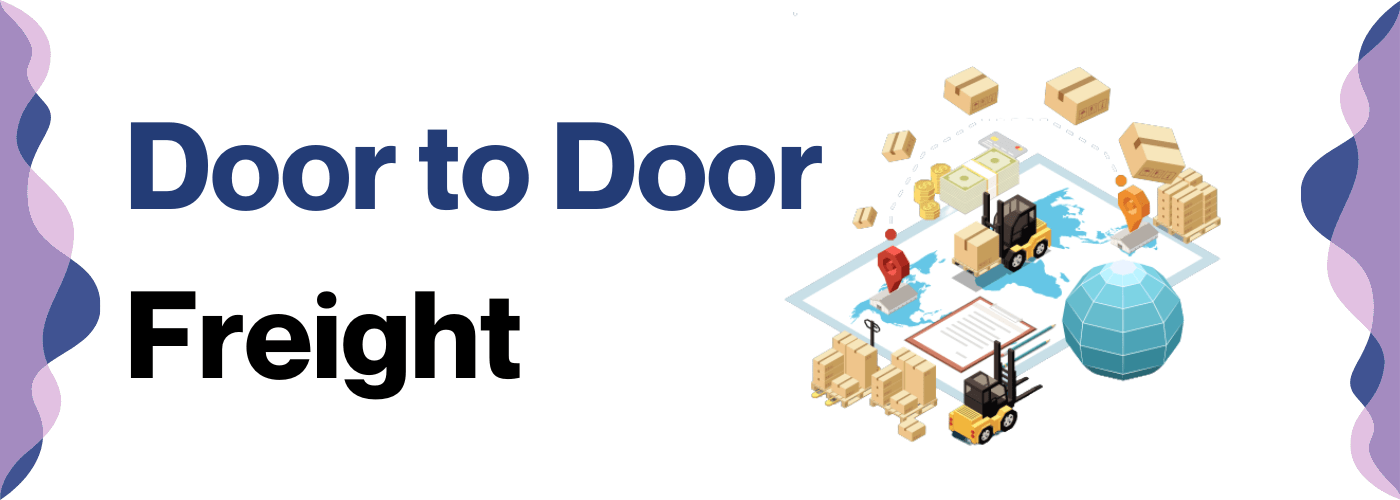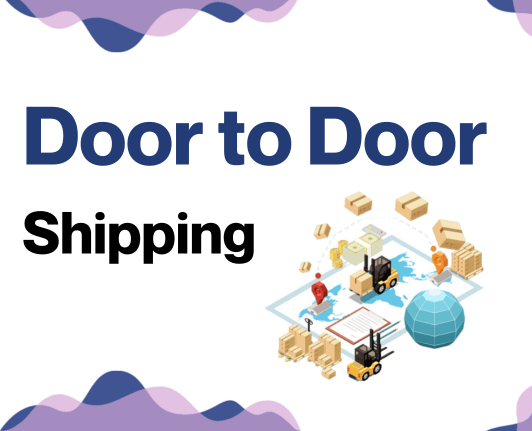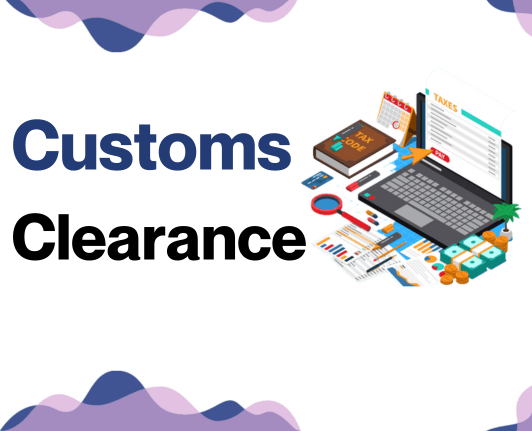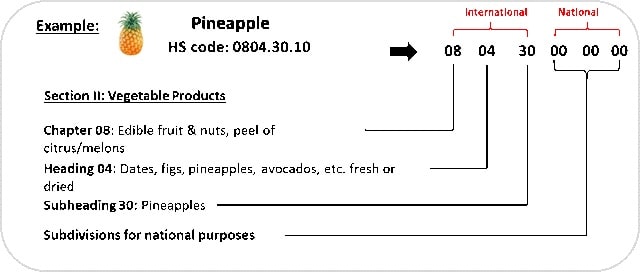Well, who said sending a bowl of pho overseas would be easy? But fear not, let's break down the real deal shipping freight from Vietnam to Portugal. From understanding the variable shipping rates to demystifying the transit times and customs regulations, there's a lot to comprehend. This guide is a toolbox, packed with insights about different freight options - be it air, sea, road, or rail. We'll walk you through customs clearance protocols, explain duties and taxes, and offer strategic advice tailored specifically for businesses like yours. If the process still feels overwhelming, let FNM Vietnam handle it for you! We provide end-to-end service for international freight forwarding, turning your logistics challenges into triumphant successes.
Which are the different modes of transportation between Vietnam and Portugal?
Deciding on the best way to ship items between Vietnam and Portugal can feel like finding the quickest route in a maze. Picture where these nations lie geographically - Vietnam in Southeast Asia and Portugal at Western Europe's edge. A quick glance at a map will tell you the vast oceans and landmasses separating them. Overland routes, like road or rail, are impractical due to this huge distance. So, do you choose between sea or air freight? Well, it's like deciding between a cargo ship and a plane. The former is slower but cost-efficient, while the latter is faster but pricier. Your choice should match your shipping needs and budget.
How can FNM Vietnam help?
Looking to ship goods between Vietnam and Portugal? With FNM Vietnam, you can get a stress-free experience. Our experts offer comprehensive solutions, from transport organization to customs clearance. Want to know more? Reach out for a free estimate in less than 24 hours or engage with our consultants for free. We're here to assist.
FNM Vietnam Tip: Sea freight might be the best solution for you if:
- You're moving big loads or large items. Sea freight offers roomy, cost-effective solutions.
- Your shipment isn't time-critical. Ocean routes take longer but are often more reliable.
- Your supply chain links major ports, tapping into a broad network of sea lanes.
Sea freight between Vietnam and Portugal
The bustling maritime highway around Vietnam and Portugal is testament to their flourishing trade ties. At the heart of the seafaring route are Da Nang and Porto, a pair of bustling cargo ports greeting container ships laden with goods. Ocean shipping, while unhurried, is a boon for those moving high-volume goods between these distant nations - an economical solution that brings value to businesses.
Yet, it's not all smooth sailing when charting a course through this international sea route. Shippers often grapple with painful challenges: elusive customs protocols, contingencies leading to costly surprises, or just getting lost in the labyrinth of logistics. Much like threading a needle, there's an art to navigating these waters. We decode these complexities in this guide with tailored practices and vital insights. It's your compass for sailing through intricacies, turning potential pitfalls into smooth trade winds propelling you towards your business objectives. Adept shipping between Vietnam and Portugal is now within your grasp. Anticipate these challenges, equip yourself with recommendations, and let us help steady your ship.
Main shipping ports in Vietnam
Port of Ho Chi Minh City:
Location and Volume: Located in South Eastern Vietnam, proximity to the economic hub, Ho Chi Minh City, makes this port vital for regional trade. It handles over 6 million TEUs annually.
Key Trading Partners and Strategic Importance: Major trading partners include the United States, China, and Japan. This port plays a key strategic role in ASEAN trade, especially for consumer goods, electronics, and manufacturing sectors.
Context for Businesses: If your business is looking to tap into Southeast Asian markets, the Port of Ho Chi Minh City provides a convenient gateway given its strategic location and well-established trade routes.
Port of Hai Phong:
Location and Volume: This port is situated in Northeast Vietnam, being the main seaport for the Northern region, with an annual shipping volume of over 2 million TEUs.
Key Trading Partners and Strategic Importance: Important trading partners are China, South Korea, and Singapore. The proximity to China makes it a critical port for handling imports and exports between Vietnam and China.
Context for Businesses: If your strategy involves China or the broader North Asia, the Port of Hai Phong is one to consider due to its direct connections with these markets.
Port of Da Nang:
Location and Volume: Positioned centrally in Vietnam, the Port of Da Nang is crucial for trade in the Central region. It handles close to 1 million TEUs annually.
Key Trading Partners and Strategic Importance: Essential trading partners comprise of Thailand, Japan, and the United States. Its central location makes it an important transit hub within Vietnam and beyond.
Context for Businesses: For businesses considering expansion into Central Vietnam or requiring a transit point within the country, the Port of Da Nang could be a noteworthy component of your logistics plan.
Port of Quy Nhon:
Location and Volume: Located in South Central Coast of Vietnam, the Port of Quy Nhon plays a strong trade role in the region with an annual capacity of over 200,000 TEUs.
Key Trading Partners and Strategic Importance: Key trade relationships exist with other Southeast Asian countries. This port is essential for livestock and raw material shipping.
Context for Businesses: If your business deals with livestock or raw materials destined for Southeast Asia, consider the Port of Quy Nhon as a potential part of your supply chain.
Port of Cai Mep:
Location and Volume: Situated in Southeast Vietnam, Cai Mep Port handles around 2 million TEUs annually and specializes in handling larger vessels due to its deep-water channels.
Key Trading Partners and Strategic Importance: Cai Mep has close trade ties with the United States and European countries, and hosts many international container services.
Context for Businesses: If your shipping strategy involves large vessels and targets to penetrate European and American markets, Cai Mep Port holds high strategic value due to its ability to handle big vessels and airlines connecting these regions.
Port of Vung Tau:
Location and Volume: Located in Southern Vietnam, Vung Tau specializes in oil and gas exports, with an annual volume of over 85 million tons.
Key Trading Partners and Strategic Importance: Major trading partners are countries in Asia, Europe, and America, mostly for oil and gas exports.
Context for Businesses: For energy sector businesses seeking a strong port for oil and gas exports, Vung Tau stands out with its specialized infrastructure. It could be a strategic location for businesses shipping resources to Asia, Europe, and America.
Main shipping ports in Portugal
Port of Leixões:
Location and Volume: Situated in Matosinhos near Porto, Leixões is the second busiest port in Portugal. It handles an annual shipping volume of around 18.3 million tons.
Key Trading Partners and Strategic Importance: The Port plays an essential role in Portugal’s trade with its key partners like Germany, Spain, France and the Netherlands, and specializes in container, liquid bulk, and general cargo handling.
Context for Businesses: If penetrating into the European markets, such as Spain, France, and Germany is part of your growth strategy, Leixões can be a strategic choice for your logistics, given its wide-ranging cargo handling capabilities and proximity to key European markets.
Port of Sines:
Location and Volume: The Port of Sines located in the Alentejo region, is Portugal's busiest port in terms of tonnage, handling over 47.7 million tons of cargo annually.
Key Trading Partners and Strategic Importance: Sines is vital for Portugal’s trade with Spain, Germany, China, and the United States. Its deep-water port accommodates larger vessels and major container liners.
Context for Businesses: If your business frequently uses large cargo vessels, the deep-water capabilities of the Port of Sines offer a significant logistical advantage. Its connection to the European rail and road networks also simplifies land transportation.
Port of Lisbon:
Location and Volume: Located on the banks of the Tagus River, the Port of Lisbon is the third busiest port and handles about 11.9 million tons of cargo per year.
Key Trading Partners and Strategic Importance: It plays a vital role in Portugal's trade with key partners Germany, Spain, France, and Italy. It is proficient in handling container, dry and liquid bulk, and passenger traffic.
Context for Businesses: If your business also involves passenger services in addition to cargo, Lisbon can offer an ideal mixture of capabilities. Its central location makes it a strategic choice for businesses targeting the wider European market.
Port of Setúbal:
Location and Volume: Situated in the Sado Estuary, this port specializes in handling roll-on/roll-off cargo, with an annual volume of around 6.7 million tons.
Key Trading Partners and Strategic Importance: Setúbal's primary trading partners include Germany, Algeria, Cuba, and the United States. It primarily focuses on the transportation of automotive units.
Context for Businesses: If your business primarily involves the import or export of vehicles, Setúbal is potentially the optimal port for your logistics with its specialized roll-on/roll-off facilities.
Port of Aveiro:
Location and Volume: Located along the Vouga River Estuary, Aveiro handles nearly 4.5 million tons of cargo every year.
Key Trading Partners and Strategic Importance: Aveiro’s primary trading partners include Spain, Germany, France, and the United Kingdom. The port handles a mix of cargo types including solid bulk, container cargo, and roll-on/roll-off cargo.
Context for Businesses: If your business involves diverse ship cargo forms, the Port of Aveiro's versatility may complement your logistics strategy effectively. Being linked to Spain and France via road and rail also presents advantageous land distribution options.
Should I choose FCL or LCL when shipping between Vietnam and Portugal?
Shipping between Vietnam and Portugal? Choosing between a Full Container Load (FCL) and Less than Container Load (LCL) - or consolidation - could be your pivotal decision. It's not just about freight cost and delivery time, but overall shipping success. This chapter will shine light on these two sea freight options, tailoring it to your specific needs, and steering your business towards an informed choice. Let's delve into the defining characteristics of FCL and LCL to decode what’s best for your shipping strategy. Buckle up for a smoother sail through the world of international logistics.
LCL: Less than Container Load
Definition: LCL (Less than Container Load) shipping is the transportation of goods that do not fill a whole container. It's often used for smaller freight volumes, allowing multiple LCL shipments to be consolidated into a single container for efficiency.
When to Use: Typically, LCL shipping is the optimal choice when your cargo is less than around 15 cubic meters (CBM). It's particularly beneficial because it offers price flexibility, making it ideal for smaller businesses or those with less frequent shipping needs.
Example: For instance, if a ceramics company in Vietnam needs to send a one-time order of 10 CBM worth of pottery to Portugal, an LCL shipment would be the most cost-effective method. They would only pay for their portion of the container space, not an entire container.
Cost Implications: With LCL Freight, you pay only for the space your goods use inside the container, rather than for a full container. This results in significant cost savings for smaller shipments, but can be more costly if utilized for larger volumes. Remember, every shipment also comes with a set of fixed fees (like loading and unloading), so it's crucial to consider these variables in your overall cost evaluation.
FCL: Full Container Load
Definition: FCL, or Full Container Load, refers to 'FCL shipping' where you have exclusive rights to a whole container (usually a 20'ft or 40'ft container) for your goods.
When to Use: It's a cost-effective and safe option for larger shipments, typically when cargo exceeds 13/14/15 CBM. You seal the 'FCL container' from origin to the destination, reducing the risk of damage or loss.
Example: Imagine you wish to ship 200 barrels of fish oil to Portugal from Vietnam, each being 0.09 CBM. In total, you'll have approximately 18 CBM of cargo – a perfect scenario to opt for FCL shipping. You seal the container in Vietnam and it is only opened on arrival in Portugal, ensuring the integrity of your shipment.
Cost Implications: While the upfront 'FCL shipping quote' may appear high compared to LCL (Less than Container Load), it is significantly cheaper per unit for high volume cargo, saving you on the cost per CBM. Remember, though, shipping cost might fluctuate based on container size, distance, and seasonal factors.
Say goodbye to shipping headaches!
Struggling with the choice between consolidation and full container shipping from Vietnam to Portugal? Rely on FNM Vietnam - we're dedicated to making cargo shipping straightforward and effortless. Our team of ocean freight specialists can guide you, considering factors like shipment size, budget, and delivery timelines. Set your mind at ease and make an informed decision that benefits your business. Ready to take the next step? Contact us now for your free, no-obligation shipping estimation.
How long does sea freight take between Vietnam and Portugal?
The average transit time for sea freight shipping between Vietnam and Portugal can range from 20 to 30 days. This timeframe, however, can vary extensively depending on several factors such as the specific ports involved, the weight of the shipment, as well as the nature of the goods being transported. Considering these variables, it is highly recommended for businesses to reach out to experienced freight forwarders like FNM Vietnam in order to get a customized quote that suits their specific needs.
As for the main sea freight ports in both countries, here's a quick snapshot showing the corresponding average transit times:
| Port (Vietnam) | Port (Portugal) | Transit Time (Days) |
| Hai Phong | Lisbon | 35 |
| Da Nang | Aveiro | 35 |
| Ho Chi Minh City | Leixões | 30 |
| Quy Nhon | Setúbal | 45 |
*Please note these are average times and can vary depending on a range of factors mentioned earlier. For specific transit times, it's best to contact a freight forwarder with expertise in these routes.
How much does it cost to ship a container between Vietnam and Portugal?
Estimating the exact cost of shipping a container from Vietnam to Portugal is quite complex, with ocean freight rates varying considerably. The shipping cost per CBM could range widely, influenced by several key factors including the point of loading, destination, carrier choice, nature of your goods, and even monthly market fluctuations. Rest assured, our team of shipping specialists is on standby, ready to guide you through every step. We personalize each quote, striving to offer you the most competitive and cost-effective solution for your specific needs. Shipping doesn't have to be daunting or overly expensive – let us take the aches out of international freight for you.
Special transportation services
Out of Gauge (OOG) Container
Definition: An OOG container is a specialized shipping option designed for cargo that exceeds the standard shipping container dimensions.
Suitable for: Out of gauge cargo, particularly large machinery, construction equipment, and oversized items.
Examples: Industrial generators, wind turbine blades, and large agricultural machinery make excellent candidates for this type of shipping.
Why it might be the best choice for you: If your cargo won't fit inside a standard shipping container due to its size or shape, an OOG container is the right solution.
Break Bulk
Definition: Break bulk shipping involves the transportation of goods not in containers, but instead loaded individually onto a vessel.
Suitable for: Loose cargo load, equipment and large-sized goods that aren't container-friendly.
Examples: Large construction materials like steel girders or crates of machinery fall under this category.
Why it might be the best choice for you: If you're shipping multiple loose or individual items that are tough to containerize, consider break bulk as your go-to option.
Dry Bulk
Definition: Dry bulk shipping refers to the transport of homogeneous commodities in bulk quantities, loaded directly into a ship's cargo hold.
Suitable for: Granular and dry goods like grains, coal, and sand.
Examples: Mining products, cement mix, and agricultural products like wheat or rice are typically transported this way.
Why it might be the best choice for you: If your product comes in large quantities and isn't packaged individually, dry bulk might be your most efficient shipping option.
Roll-on/Roll-off (Ro-Ro)
Definition: Ro-ro vessel shipping refers to the method where vehicles are driven directly onto the ship and secured within the vessel--wheeled or on a flatbed--and rolled off at the destination.
Suitable for: Operational vehicles, trailers, and heavy rolling machinery.
Examples: Cars, trucks, buses, tractors, and even railway carriages are shipped using this method.
Why it might be the best choice for you: If you're dealing with freight that is mobile, Ro-Ro shipping offers a seamless approach that minimizes loading and unloading complexities.
Reefer Containers
Definition: Refrigerated containers, or reefer containers, are temperature-controlled shipping units used to transport perishable goods.
Suitable for: Food items, pharmaceuticals, and any cargo that needs to be transported at a controlled temperature.
Examples: Fresh fruits and vegetables, dairy products, meats, and certain chemicals are commonly shipped in reefer containers.
Why it might be the best choice for you: If your cargo needs cold storage and specific temperature maintenance throughout its journey, nothing beats a reefer container.
At FNM Vietnam, we're always ready to help you choose the right sea freight shipping option for your cargo. Reach out to us for a free shipping quote in less than 24 hours!
FNM Vietnam Tip: Air freight might be the best solution for you if:
- You're on a tight schedule. Air freight delivers speed unmatched by other modes.
- Your cargo is under 2 CBM, a good fit for air's smaller capacity.
- Your destination is off the usual routes, making air's global network a key asset.
Air freight between Vietnam and Portugal
Air freight between Vietnam and Portugal offers you lightning-quick, reliable delivery--just the ticket for small, valuable consignments that need to reach their destination pronto! Imagine, your delicate silks or premium coffee can land in Lisbon in the blink of an eye, safe and intact. But beware! Many businesses falter here. They stumble over unreliable estimates, like a runner misjudging a hurdle. Factoring weight incorrectly while pricing can be like using a faulty map--high-risk and cost-ineffective. Further, unkempt unawareness of industry best practices can inflate costs, ballooning them like a surprise party that you weren't ready for. Buckle in, as we course through these common pitfalls and their solutions.
Air Cargo vs Express Air Freight: How should I ship?
Air freight between Vietnam and Portugal
Air freight between Vietnam and Portugal offers you lightning-quick, reliable delivery--just the ticket for small, valuable consignments that need to reach their destination pronto! Imagine, your delicate silks or premium coffee can land in Lisbon in the blink of an eye, safe and intact. But beware! Many businesses falter here. They stumble over unreliable estimates, like a runner misjudging a hurdle. Factoring weight incorrectly while pricing can be like using a faulty map--high-risk and cost-ineffective. Further, unkempt unawareness of industry best practices can inflate costs, ballooning them like a surprise party that you weren't ready for. Buckle in, as we course through these common pitfalls and their solutions.
Should I choose Air Cargo between Vietnam and Portugal?
Choosing Air Cargo as a shipping method between Vietnam and Portugal can be appealing. Airlines such as Vietnam Airlines and TAP Portugal are known for their reliability and cost-effective freight operations. This option, while maintaining strict schedules that could extend transit times, offers essential value for shipments exceeding 100/150 kg (220/330 lbs). So, if your budget is a major consideration and you can accommodate the airline schedules, air cargo might indeed be your best alternative.
Should I choose Express Air Freight between Vietnam and Portugal?
Express air freight, a specialized service using dedicated cargo planes, is a winning choice for businesses shipping small, high-value, or time-sensitive goods between Vietnam and Portugal. Ideal for parcels under 1 CBM or 100/150 kg (220/330 lbs), express air makes your cargo a priority. Prestigious firms like FedEx, UPS, and DHL offer this helping you deliver promptly and securely. If your consignment is urgent, compact or merits extra care, opting for express air freight could be an excellent decision. Compare, consider and choose what suits best to your shipping priorities.
Main international airports in Vietnam
Tan Son Nhat International Airport
Cargo Volume: With an annual cargo turnover of over 1.4 million tons, it's the busiest cargo airport in the country.
Key Trading Partners: Main trade partners are other Southeast Asian countries, China, South Korea, and the USA.
Strategic Importance: Located in Ho Chi Minh City, it is centrally positioned for domestic distribution and offers strategic access to the major urban centers of Vietnam.
Notable Features: Boasts state-of-the-art cargo handling facilities and supportive infrastructure.
For Your Business: If your business is focusing on trade within Southeast Asia or with China and the USA, leveraging Tan Son Nhat's robust cargo operations could streamline your shipping tasks.
Noi Bai International Airport
Cargo Volume: Handles over 900,000 tons of cargo annually.
Key Trading Partners: Major trading partners include China, the USA, South Korea, Taiwan, and Japan.
Strategic Importance: Situated in Hanoi, it plays an important role in trade with Northern Vietnam's industrial zones.
Notable Features: Offers comprehensive logistics services, and a robust road network ensuring cargo reaches its destination efficiently.
For Your Business: If you're trading with Northern Vietnam, using Noi Bai International Airport would expedite your cargo deliveries and ensure efficient processing.
Da Nang International Airport
Cargo Volume: Handles around 100,000 tons of cargo per year.
Key Trading Partners: Main trade partners involve China, Southeast Asian nations, and South Korea.
Strategic Importance: It's strategically located in the middle of Vietnam, making it ideal for serving Central Vietnam and parts of Laos and Cambodia.
Notable Features: Features a newly upgraded cargo terminal and direct highway access for easy cargo conveyance.
For Your Business: If your business is serving Central Vietnam, Laos, or Cambodia, the Da Nang International Airport would be an advantageous option for you.
Cam Ranh International Airport
Cargo Volume: With an annual cargo throughput of about 80,000 tons, it's an emerging cargo hub in Vietnam.
Key Trading Partners: Trading partners are mainly Southeast Asian countries, China, and the USA.
Strategic Importance: It's located in Khanh Hoa Province which is one of the most economically dynamic regions in Vietnam.
Notable Features: It was formerly a military base and has a long runway ideal for large cargo aircraft.
For Your Business: If you aim to tap into Khanh Hoa's dynamic economy, using Cam Ranh International Airport would feasibly support your logistics operations.
Can Tho International Airport
Cargo Volume: Handles approximately 50,000 tons of cargo annually.
Key Trading Partners: Its main trading partners are largely found in Asia, with increasing connections with North America and Europe.
Strategic Importance: Positioned in the Mekong Delta region, an agricultural powerhouse of Vietnam, it plays a vital role in the export of local products.
Notable Features: Offers efficient cargo handling services and a commitment to sustainable development.
For Your Business: If your business deals with agricultural goods or products from the Mekong Delta, Can Tho International Airport can facilitate your trading expeditions.
Main international airports in Portugal
Aeroporto de Lisboa Humberto Delgado (Lisbon Airport)
Cargo Volume: Lisbon Airport handles over 100,000 tons of cargo annually, making it Portugal's busiest cargo airport.
Key Trading Partners: Major partners consist predominantly of European, African, and South American countries, including Spain, France, Morocco, and Brazil.
Strategic Importance: As one of the major entrance points to Portugal, Lisboa controls a significant share of Portugal’s cargo traffic. Situated in the nation's capital city, it offers a key gateway to business hubs and industry zones.
Notable Features: In addition to its central location, the airport boasts a 24/7 operational cargo terminal and modern infrastructures, designed to handle a wide range of cargo types, from general goods to perishable and hazardous materials.
For Your Business: If you're targeting customers in Portugal’s central region or capital, choosing this airport can ensure quick and efficient access to your market. Its range of cargo handling services can help ensure your goods are safely managed and expedited.
Francisco Sá Carneiro Airport (Porto Airport)
Cargo Volume: Annually, Porto Airport handles cargo in excess of 35,000 tons.
Key Trading Partners: Spain, France, Germany, and Angola are amongst the airport's significant trading partners.
Strategic Importance: The airport, located in Porto, the second-largest city in Portugal, is pivotal for businesses operating in Northern Portugal and also serves as a handy European gateway.
Notable Features: Porto Airport provides highly efficient handling services for a variety of cargo, enabled by a modern cargo terminal and strategic airport layout that ensures minimal transport and handling times.
For Your Business: If you need to distribute goods within Northern Portugal and Europe efficiently, this airport's location and structure offer an ideal hub. Their focus on minimizing handling times contributes to avoiding unnecessary delays.
Airport of Faro
Cargo Volume: The airport handles a smaller volume of approximately 2,000 tons of cargo annually.
Key Trading Partners: Common trading partners are primarily concentrated in Europe—Spain, the UK, France, and Netherlands.
Strategic Importance: Its strategic location in Southern Portugal, near the Spanish border, makes it a crucial gateway to both the Portuguese and Spanish markets, particularly for trades involving light cargo.
Notable Features: Despite the smaller cargo volume, it is equipped to support a wide range of cargo types and has a cargo terminal that operates round the clock.
For Your Business: If your operations require an access point to both Portugal and Spain, especially for lighter cargo loads, Faro Airport represents an efficient and strategic staging post.
How long does air freight take between Vietnam and Portugal?
Typically, air freight shipments between Vietnam and Portugal take an average of 5-10 days. However, it's vital to note that this is not a steadfast rule. Transit times can fluctuate depending on various factors such as the specific airports involved, the weight of your shipment, and the nature of the goods being transported. For pinpoint accuracy on transit times tailored to your specific shipping needs, it's best to consult with an experienced freight forwarder, such as FNM Vietnam.
How much does it cost to ship a parcel between Vietnam and Portugal with air freight?
Shipping an air freight parcel between Vietnam and Portugal can roughly range from $2 to $15 per kg. However, pinpointing an exact cost isn't straightforward due to variables such as the distance from the departure & arrival airports, package dimensions, weight, and nature of goods. Rest assured, our team prides itself on providing the most competitive rates precisely tailored to your individual needs. We quote on a case-by-case basis to ensure you get unmatched value. Contact us and receive a free quote in less than 24 hours.
What is the difference between volumetric and gross weight?
Gross weight is the actual weight of your package, including the contents and any packing materials. It's measured in kilograms (kg) using a standard scale. On the other hand, volumetric weight takes into account the overall size of the shipment. It's calculated by multiplying the length, width, and height of your package, then dividing by a specific divisor, typically 5000 for air freight.
In air cargo, you start with the package's physical measurements. Let's use an example. Suppose your box is 50cm long, 40cm wide, and 30cm high. Multiply those together (504030), you get 60000 cubic centimeters. Now divide by the mentioned divisor, 5000, to get volumetric weight, it comes out to be 12 kg, or 26.4 lbs.
For Express Air Freight, the divisor is usually smaller, often 4000, meaning a higher volumetric weight for the same package. In our example, 60000/4000 equals 15 kg or approximately 33 lbs.
Why does it matter? It's all about space vs weight. Carriers need to consider both the weight cargo adds to their airplane, and how much space it takes. Thus, they charge based on the higher of the two weights. It ensures optimal balance between cargo carried and space used. This way, carriers prevent losses from carrying lightweight, bulky shipments without appropriate pricing.
FNM Vietnam Tip: Door to Door might be the best solution for you if:
- You seek hassle-free shipping. Door-to-door manages the entire process for you.
- You like one go-to contact. A dedicated agent oversees your door-to-door shipment.
- You aim to limit cargo handling. Fewer transitions mean less risk of damage or loss.
Door to door between Vietnam and Portugal
Door-to-door shipping is the sweet spot of convenience in international freight. It's about unpacking the complexities of moving goods from Vietnam to Portugal, transforming it into a seamless journey handled by one provider. With timeliness, cost-effectiveness, and reduced hassles as some key advantages, it's no surprise why it's the preferred choice for many. So, why wait? Let's dive in!
Overview – Door to Door
Your shipping needs between Vietnam and Portugal can be a complex affair. That's why door-to-door shipping is a major relief—eliminating both shipping hassles and constant coordination. Although it's a premium service, being FNM Vietnam's most chosen option proves its worth. From handling customs clearances to time-critical deliveries, our door-to-door solution is designed to iron out all intertwining intricacies. Tread carefully, as it's not all rosy, expect unpredicted costs like potential duties at customs. All said, for a stress-free logistics solution, nothing tops door-to-door shipping. It's your convenient answer to cross-border transport worries. Choose wisely, choose convenience. Choose door-to-door.
Why should I use a Door to Door service between Vietnam and Portugal?
Ever thought of shipping goods as thrilling as a roller coaster ride? Neither have we! Let’s paint you a more chilled picture with Door to Door services from Vietnam to Portugal.
1. Stress-less logistics: To start off, imagine saying goodbye to the daunting task of organizing the transportation of your goods. Door to Door services do precisely that—they pick up your goods from the source and manage the entire process until they reach the final destination. Consider it a one-stop-shop for your logistics worries!
2. Pin-point timely deliveries: With urgent shipments, every tick of the clock matters. Door to Door services are designed to save you from watching the clock anxiously. They take up the task of timely delivery, enabling businesses to keep up with their tight schedules.
3. Specialized care for complex cargo: Got an out-of-the-box cargo? Door to Door services offer specialized care for complex, delicate, or high-priority items. Ensure the safe and secure delivery of your unique cargo with bespoke handling.
4. Convenience redefined: Door to Door services redefine convenience by simplifying the trucking process. They handle the intricacies of moving your cargo between Vietnam and Portugal, leaving you more time to focus on other important aspects of your business.
5. Ensured compliance: Making sense of international trade regulations can be as clear as mud. With Door to Door services, you’re spared the administrative burden—you don't have to struggle with the technical jargon of customs or worry about compliance requirements.
To summarize, Door to Door services between Vietnam and Portugal offer you a hassle-free, time-saving, and reliable solution for shipping goods, whether you're dealing with standard or complex cargo. Sounds too good to be true? Trust us, it's as real as it gets!
FNM Vietnam – Door to Door specialist between Vietnam and Portugal
Unburden yourself and trust FNM Vietnam with your shipping needs from A to Z, doorstep to doorstep. Lay back as our experienced crew handles packing, transportation, diverse shipping methods, and even the complex customs procedures. You won't have to lift a finger! To make things even smoother, a dedicated Account Executive is assigned to every client. Ready to let the experts take over? Reach out for a no-strings-attached estimate within 24 hours or spark up a conversation with our consultants who are available at your service, anytime, any day.
Customs clearance in Portugal for goods imported from Vietnam
Customs clearance is a complex process that involves the declaration of goods to customs authorities to enter, leave, or transit between countries. Tackling customs clearance in Portugal for goods imported from Vietnam can be a maze filled with unexpected fees, duties, taxes, and sometimes even quotas and licenses. Failing to understand this might lead to your goods getting stuck in customs, a dire situation for any business. In the upcoming sections, we'll provide detailed insight into these areas to help ease your import journey. Want extra assistance? FNM Vietnam undertakes this intricate process for any kinds of goods, anywhere in the world! Just share the origin of your goods, the value, and the HS code to help us estimate your project budget.
How to calculate duties & taxes when importing from Vietnam to Portugal?
Determining the customs duties is an intricate process, largely dependent on various components including the country of origin, Harmonized System (HS Code), customs value, the applicable tariff rate, and any additional taxes or fees specific to the product type. The country of origin is crucial for it signifies where your goods were manufactured, which is the first step in determining the exact customs fees. Grasping the correct information is key to forecasting your potential landing costs, so ensuring the accuracy of the country of origin is paramount.
Step 1 - Identify the Country of Origin
Determining the Country of Origin (COO) is the first stepping stone for effective importing. So why does the COO matter that much? Here's why:
1. Trade Agreements – Specific accords, like the EU-Vietnam Free Trade Agreement (EVFTA), influence customs duties based on the COO.
2. Import Restrictions – Some goods from Vietnam face restrictions in Portugal, so being clear on COO helps to sidestep any hiccups.
3. HS Code Accuracy – COO affects the Harmonized System (HS) Code, which directly impacts the calculations of duties and taxes.
4. Compliance – Accurate COO maintains importer compliance with customs, avoiding penalties or shipment delays.
5. Market Access – Certain products from Vietnam enjoy preferential access to the Portuguese market due to their origin.
The key is to understand the impact of these specifics on your import. Depending on the agreement in place, you might get duty reductions, preferential access, or even complete duty elimination. Certain Vietnamese goods may face import restrictions, so make sure you understand the limits to avoid any unwelcome surprises. Always play safe and stay compliant. Knowledge is power, and the right understanding of your items' origin can unlock the door to seamless and cost-effective imports.
Step 2 - Find the HS Code of your product
The Harmonized System (HS) Code is an internationally standardized system of names and numbers that classifies traded products. It's used by customs authorities around the world to identify products for the purposes of taxation, regulations, and to keep track of international trade statistics.
A straightforward method to identify the HS Code of your product is by asking your supplier. Suppliers are typically well-versed with the products they're importing and the associated rules and regulations.
However, if that's not an option for you, don't worry. We have a simple step-by-step process laid out for you to find it. Let's get started:
1. Use this Harmonized Tariff Schedule as your HS lookup tool.
2. In the search bar, type in the name of your product.
3. Look for your product's HS Code in the Heading/Subheading column.
This process should gracefully guide you to find the correct HS Code for your product.
One important thing to note is the necessity for accuracy in choosing the correct HS Code. Failing to use the right code can lead to significant delays in your shipment's delivery and may even result in potential fines. Ensuring you have the correct code not only guarantees a smoother shipping process, but it also keeps you within the legal confines of international trade.
To help visual learners, here's an infographic showing you how to read an HS code.
Step 3 - Calculate the Customs Value
Shipping from Vietnam to Portugal? You might be scratching your head about how to calculate the customs value. No worries, it isn't the same as product value. Your customs value is the CIF Value – the cost of your goods, insurance, and freight all combined.
Let's assume you’re importing handmade furniture priced at $5000. Your international shipping cost is $800, and your insurance cost $200. Your CIF Value becomes $5000 (goods) + $800 (shipping) + $200 (insurance), equals $6000. This sum, $6000, is your customs value in USD. This forms the basis for import duty & tax calculations in Portugal.
Remember, nailing your customs value calculation means avoiding any unsavory surprises. Pencil it in your calculations, and ace your international shipping game!
Step 4 - Figure out the applicable Import Tariff
Import tariffs, also known as customs duties, are the taxes you pay when importing goods from another country. In Portugal, which forms part of the European Union, this is dictated by the Common Customs Tariff (CCT).
To ascertain the applicable tariff for your goods imported from Vietnam, use the TARIC System - European Customs, an online platform that offers detailed information on all aspects of EU customs duties. Start by inputting your previously established Harmonized System (HS) code and Vietnam as the country of origin. This will provide the applied duties and taxes for your product.
As an example, let's consider the HS code 6109.10, which corresponds to T-shirts, singlets and other vests, knitted or crocheted, of cotton. When selecting Vietnam as the country of origin, the TARIC system might indicate a duty rate of 12% ad valorem. If your CIF (Cost, Insurance, and Freight) costs were, let's say, $10000, the import duty would equate to an additional $1200.
Remember, customs duties can significantly impact the final price of your goods, so it's vital to calculate them accurately to avoid any unexpected expenses. By doing so, you'll not only ensure compliance with customs regulations but also optimize your shipping and logistics costs.
Step 5 - Consider other Import Duties and Taxes
In addition to the standard tariff rate, other import duties may also apply. These are contingent upon both the country of origin, in this case, Vietnam and the type of product being shipped.
For instance, an excise duty is typically placed on goods of a specific nature, such as tobacco or alcohol. Anti-dumping taxes, on the other hand, might be applicable if goods are sold significantly below their usual market price. As a way to control competitive pricing, countries will impose these taxes to prevent a 'dumping' of low-cost goods into their market.
Most crucially, there's the VAT rate. As an importer, you're required to shoulder this value-added tax which applies to all operations in the supply chain that contribute to increasing the value of a product at each stage. The current standard VAT rate in Portugal is 23%. To calculate VAT, use this formula: (Cost of goods + excise duties + tariff duties) x VAT%. For instance, for an import costing $5,000, the resulting VAT would be $5,000 x 23/100 = $1,150.
Remember, these are hypothetical figures only and actual rates may differ. It's essential for importers to stay on top of these costs to prevent any unforeseen expenditure upon arrival of goods in Portugal.
Step 6 - Calculate the Customs Duties
When importing goods from Vietnam to Portugal, calculating customs duties is an essential step to prevent unforeseen expenses affecting your bottom line.
The basic formula to calculate customs duties consists of multiply the customs value of your goods (CIF: Cost, Insurance, Freight) by the country's duty rates.
Here's how it plays out in real-world scenarios:
1. Consider you import goods valued at $10,000 with a duty rate of 5 percent, but no VAT applied. Your customs duty will be $500.
2. When VAT applies, it includes the customs value and duties. For goods valued at $10,000 with a 5 percent duty rate and 23 percent VAT, you'd pay $500 in duty and an additional $2,415 in VAT.
3. The full equation includes an anti-dumping tax and Excise Duty. Let's have goods worth $10,000, with a 5 percent duty rate, 23 percent VAT, 10 percent anti-dumping taxes, and 5 percent Excise Duty. Your total would be $500 for duties, $2,415 for VAT, $1,000 for the anti-dumping tax and $500 for Excise Duty.
This might seem overwhelming, but that's where FNM Vietnam enters the stage. We can simplify the process, ensuring you're accurately charged every step of the way. Reach out to us for a free quote in less than 24 hours. We’ve got your worldwide customs clearance covered.
Does FNM Vietnam charge customs fees?
Navigating the shipping world can sometimes feel like navigating a maze: the language might be similar, but the differences are crucial. Customs duties and customs clearance fees, for instance, are not the same. FNM Vietnam, being a customs broker, will charge you for customs clearance services, aiding you in expediting the transportation process. However, the customs duties and taxes? They go directly to the government - not a penny lands in our pocket. To clear any doubts, we'll provide you with documents from the customs office, making it crystal clear where each part of your payment went.
Contact Details for Customs Authorities
Vietnam Customs
Official name: General Department of Vietnam Customs
Official website:
https://www.customs.gov.vn/
Portugal Customs
Official name: Autoridade Tributária e Aduaneira
Official website:
https://www.portaldasfinancas.gov.pt
Required documents for customs clearance
Sorting through customs documentation can be overwhelming! Keep calm; we've broken down key paperwork including the Bill of Lading, Packing List, Certificate of Origin, and Conformity Documents (CE standard), saving your time and headache in this crucial process. Get ready to conquer this regulatory thicket with ease!
Bill of Lading
Taking your goods from Vietnam to Portugal? You'll need a Bill of Lading, the VIP pass in the world of logistics. Think of this crucial document as the transfer deed in a property sale - it passes cargo ownership from seller to buyer. Whether you're dealing with a mountain of cotton swabs or a fleet of mopeds, the Bill of Lading holds your transaction details: commodity, quantity, destination, and more.
Now, let's talk convenience with the electronic or 'telex' release. Say goodbye to courier costs and delayed shipments. This nifty digital tool allows you to receive your Bill of Lading electronically, speeding up the process. For air cargo? It's the Air Waybill (AWB) to the rescue.
What does this mean for you? Well, sorting these details early can be a game-changer, avoiding potential snags at Portuguese customs and keeping your cargo sailing smoothly.
Packing List
When dispatching goods from Vietnam to Portugal, the Packing List is a crucial lifeline. It's your responsibility as a shipper to ensure the accuracy of each item's details, including weight, dimensions and count on this list. Consider it as a passport for your freight! It works with both sea and air freights. A detailed Packing List can prevent costly customs delays, like an unfortunate business who had a container of machinery parts held up in Lisbon due to a vague description. So, it’s instrumental in ensuring your goods sail smoothly through customs, saving you from potential headaches and holdups.
Commercial Invoice
Everyone wants a smooth customs clearance process from Vietnam to Portugal, and your Commercial Invoice plays a pivotal role. It's not just a bill but a vital document outlining your shipment's value, origin, and description. Pay attention to the details! Make sure the information aligns with other shipping documents to avoid delays. Think about the Harmonized System (HS) Codes - using these correctly on the invoice helps Portuguese customs understand exactly what's in the shipment and quickly determine the required duties. Keep in mind, an error-free Commercial Invoice can be that decisive factor that allows your shipment to reach Lisbon, Porto, or Faro on-time, boosting your business credibility. So, invest time in getting it right!
Certificate of Origin
Shipping your goods from Vietnam to Portugal? Don't overlook the Certificate of Origin! This document is your product’s passport, indicating its birthplace - the country of manufacture. It's more than just a formality, it might just be your ticket to lower customs duty rates. Imagine your shipment of handmade Vietnamese furniture: A correctly submitted Certificate of Origin could land you preferential rates, saving your business considerable cost. But remember, any inaccurate details can cause problems in customs and delay your shipment. Accuracy matters, so double-check your forms for error-free, smoother shipping. Happy trading!
Certificate of Conformity (CE standard)
Moving goods between Vietnam and Portugal? Then the CE standard is crucial. This is your ticket to the European market, showing that your products meet the high health, safety, and environmental standards set by the EU. It's not about quality assurance – it's about conformity to specific regulations. Think of it like the US standards for goods. But remember: you need to secure this before shipping, just as critical as your cargo is packed. Take note: it's not interchangeable with the UK's new UKCA marking. Check the product categories that need the CE standard, get it certified, and fast-track your entry into Portugal's market. Knowledge today, leads to smoother customs tomorrow.
Your EORI number (Economic Operator Registration Identification)
Shipping goods from Vietnam to Portugal? Your business will need an EORI Number. It's a unique ID that allows customs to track imports and exports within the EU. Without it, clearing goods at Portuguese customs might be tricky. Kickstart the registration process by applying at your country's customs website. Remember, the EORI is required not just for EU countries, but also for businesses in other countries shipping to the EU. It's not a heavy process – and it's your key to smooth, efficient trade. Your EORI Number acts as a passport for your goods, ensuring a stress-free journey from Vietnam to Portugal. Get yours!
Get Started with FNM Vietnam
Experience stress-free customs clearances when shipping between Vietnam and Portugal with our comprehensive services. At FNM Vietnam, we'll handle every step, ensuring a smooth transition for your goods. Why guess through the complexities? Just reach out to us and get a no-obligation quote within 24 hours. Your international shipping solution is just an inquiry away!
Prohibited and Restricted items when importing into Portugal
Ever tried unraveling what you can and can't bring into Portugal? It's a real headache, trust us. Avoid customs woes and unexpected surprises with our handy guide that uncovers Portugal's import rules on prohibited and restricted items. Stay compliant and stress-free. Let's dig in.
Restricted Products
- Drugs and Narcotics: You have to apply for a license from the Infarmed – National Authority of Medicines and Health Products. This includes both medical and recreational substances. Check out their website here: Infarmed
- Endangered Species and Wildlife Products: To ship these, you have to obtain a permit from the Institute of Nature Conservation and Forests (ICNF). Visit their webpage here: ICNF
- Explosives, Fireworks, and Pyrotechnic Products: You'll need a special permit from the National Civil Aviation Authority (ANAC) and the National Authority for the Security of the Civil Aviation (ANSAC). See their sites here: ANAC & ANSAC(https://www.ansac.pt/)
- Weapons and Ammunitions: A special permit is required from the Policia de Segurança Publica (PSP). You can find the relevant information on their webpage: PSP
- Alcoholic Beverages, Tobacco, and Electronic Cigarettes: For transport of these items, a permit is needed from the Tax and Customs Authority (AT). You can visit their site here: AT
- Phytosanitary products and plant protection products: To ship these, you need special clearance from the Portuguese General Directorate of Food and Veterinary (DGAV). Check out their webpage here: DGAV
- Cultural Goods: Items of cultural, historical, or archaeological importance require a special permit from the Directorate-General for Cultural Heritage (DGPC). Visit their site here: DGPC
- Hazardous Materials: You'll need specific authorizations, often varying per substance, managed by the Portuguese Authority for Economic and Food Safety (ASAE). Visit their official website: ASAE
- Seeds, Plants and Animals: A permit from the Directorate General for Food and Veterinary (DGAV) is required. Here is a link to their site: DGAV
Prohibited products
- Narcotics and drugs, excluding prescribed medication
- Counterfeit goods and products
- Unauthorised replica firearms or weapons
- Certain hazardous substances and dangerous goods
- Illegally captured wildlife and related animal products
- Explosives and pyrotechnic devices
- Offensive materials presenting a threat to public safety or morals
- Soil and certain biological substances
- Certain protected species (flora & fauna) as per the Convention on International Trade in Endangered Species (CITES)
- Products containing biocide dimethyl fumarate (DMF)
Are there any trade agreements between Vietnam and Portugal
Indeed, there is an overarching Free Trade Agreement (FTA) between the European Union, which includes Portugal, and Vietnam. This FTA, effective since August 2020, facilitates duty-free exports for a variety of goods, potentially reducing your shipping costs. Additionally, both countries are part of ongoing discussions for the Regional Comprehensive Economic Partnership, offering prospects for future collaborative opportunities. Consider this when planning your freight forwarding strategy between Vietnam and Portugal.
Vietnam - Portugal trade and economic relationship
Spanning several decades, the Vietnam-Portugal economic partnership has grown remarkably. Historic ties dating back to the 16th century have facilitated a vibrant trading landscape with total bilateral trade reaching approximately $500 million USD on the year 2023. Key sectors include textiles, electronics, and foodstuff. Portugal is also among the top European investors in Vietnam, fostering a pivotal economic relationship with cumulative investments of nearly $100 million USD. Conversely, Vietnamese exports, primarily in fishery and textiles, are making significant inroads to Portugal's markets. The strengthened trade relationship between these nations continues to flourish, serving as a cornerstone of their international economic ties.
Your Next Step with FNM Vietnam
Confused about customs clearance or fretting over freight options between Vietnam and Portugal? With FNM Vietnam, trade tension becomes a thing of the past. Our experts handle every detail meticulously, making your shipping experience as smooth as silk. Say goodbye to shipping uncertainties, choose FNM Vietnam. Ready to ship with mastery? Contact us today!
Additional logistics services
Explore our wide array of extra logistics solutions, extending beyond shipping and customs, articulating a comprehensive supply chain strategy with FNM Vietnam. Enjoy effortless business, as we manage everything end-to-end. Now that's logistic efficiency redefined!
Warehousing and storage
Finding the right warehousing solution in the Vietnam-Portugal route can feel like a puzzle. It's crucial to ensure factors like temperature control for goods such as food or pharmaceuticals. Rest assured, we demystify this world of warehousing for you. Uncover comprehensive solutions on our dedicated page here: Warehousing.
Packaging and repackaging
Ensuring goods reach Portugal securely from Vietnam hinges on excellent packaging. The wrong approach could lead to hefty losses. Collaborate with a reliable freight forwarder who can package and repackage a diverse range of items, from ceramics to textiles. For instance, protecting lacquerware requires bubble wrap and corrugated cardboard for edge protection. More info on our dedicated page: Freight packaging
Cargo insurance
You might think of Cargo Insurance like a bulletproof vest for your shipped goods. Unlike fire insurance, it shields from risks across the journey, not just static perils. Picture a sudden storm damaging your delicate goods; ocean voyages aren't always smooth sailing. This is where Cargo Insurance steps in, mitigating such unforeseen risks. Curious about more protection measures your freight might need? Get acquainted with our Cargo Insurance page.
Supplier Management (Sourcing)
Got your eyes on Vietnam's robust manufacturing capabilities, but unsure where to start? Our Supplier Management service slices through complexities, locating reliable suppliers in Asia and East Europe. We'll be your trusted guide across language barriers and through the procurement labyrinth, making the sourcing process a breeze. More info on our dedicated page: Sourcing services
Personal effects shipping
Moving treasured items from Vietnam to Portugal? You'll need top-notch attention to the handling of your fragile or bulky goods. We thrive on providing this professional care with the flexibility you deserve. Imagine your granddad's vintage desk shifted without a scrape! More info on our dedicated page: Shipping Personal Belongings.
Quality Control
Do you cringe when you imagine receiving a container full of defective goods? Our quality control service is your insurance against such nightmares. Picture opening a sea cargo from Vietnam to Portugal, full of impeccable products, perfectly aligned with EU norms. This level of assurance is achievable, thanks to our rigorous inspections during manufacturing. Can you see the difference with your own shipments? Dive deeper into making this your reality on our Quality Inspection page.
Product compliance services
No fan of red tape? Our Product Compliance Services are here to cut through it for you. We test your goods in our labs, ensuring they meet all regulations at destination. With us, obtaining the necessary certifications is no longer a chore – it’s part of the journey. Say goodbye to surprises and hello to smooth shipments!
FAQ | For 1st-time importers between Vietnam and Portugal
Does your quotation include all cost?
We, at FNM Vietnam, ensure our quotations are comprehensive, encompassing all costs except for duties and taxes at the destination. You can count on your dedicated account executive to provide an estimated sharp breakdown of duties and taxes. Rest assured, we prioritize transparency, pledging no hidden fees so that unexpected costs won't surprise you. Necessary paperwork during a shipment from Vietnam to Portugal includes two crucial documents: the bill of lading for sea freight or air waybill for air freight, handled by us, FNM Vietnam. It's equally important you provide us with your packing list and commercial invoice. Depending on what types of goods you're shipping, additional documentation may be required. This could include Material Safety Data Sheets (MSDS), certifications, and other product-specific documents. We're here to assist you with all these details to ensure a smooth shipping process.
Do I need a customs broker while importing in Portugal?
Indeed, while it isn't strictly necessary, we highly recommend enlisting the help of a customs broker when importing into Portugal. Navigating through complex procedures, and providing detailed and specific paperwork can be challenging if you're unfamiliar with the process. This is where a customs broker comes in handy, making your journey significantly smoother. Here at FNM Vietnam, our expertise extends to representing your cargo at customs for most shipments, saving you from potential pitfalls and confusion. Leveraging a customs broker's knowledge can make the difference between a smooth import process and an actually complicated one.
Can air freight be cheaper than sea freight between Vietnam and Portugal?
Determining the most cost-effective shipping method between Vietnam and Portugal heavily depends on factors like the shipping route, cargo weight, and volume. Typically, if your cargo is less than 300 kg or 1.5 cubic meters, air freight could be a feasible choice from a cost perspective. However, it is always best to consult with a logistics expert who understands the nuances of international freight forwarding. Here at FNM Vietnam, we have a team of dedicated account executives who can assess your specific shipping needs and provide the most competitive option. Rely on us for efficient and cost-effective shipping solutions.
Do I need to pay insurance while importing my goods to Portugal?
While it's true that insurance isn't obligatory for importing goods to Portugal, we strongly advise against overlooking it. Remember, unexpected incidents can occur during shipping that could lead to damage, loss, or even theft of your goods. Therefore, insuring your goods is like assigning a safety net that could save you from substantial monetary losses down the line. As your trusted freight forwarder, we always prioritize the protection and safety of your shipments.
What is the cheapest way to ship to Portugal from Vietnam?
The most economical approach for shipping from Vietnam to Portugal would commonly be sea freight, given the significant geographical distance between the two countries. With routes passing through ports like Da Nang or Ho Chi Minh to Lisbon, you'll typically find this cost-effective, albeit slower than air freight. However, if you have lighter, less bulky items, you may consider special budget airlines, which can also provide competitive rates. Remember, final costs are influenced by the nature and quantity of goods, dimensions, suitable packaging, and specific delivery timelines.
EXW, FOB, or CIF?
Choosing between EXW, FOB, or CIF depends largely on your relationship with the supplier. While many suppliers sell under EXW (at their factory door) or FOB (covering all local charges until the origin terminal), it's important to remember that they may not be logistics professionals. For this reason, it's often beneficial to let us handle the international freight process and procedures at the final destination. At FNM Vietnam, we're equipped to provide comprehensive door-to-door services, ensuring that your freight is handled professionally every step of the way. This helps simplify the process for both you and your supplier, making international shipping a more efficient experience.
Goods have arrived at my port in Portugal, how do I get them delivered to the final destination?
Under CIF/CFR incoterms, you need to hire a custom broker or freight forwarder to clear your goods at the Portuguese terminal, cover import charges, and organize delivery. Alternatively, you can opt for our DAP service where we manage everything on your behalf. Please verify these details with your dedicated account executive to avoid any confusion.
Does your quotation include all cost?
We, at FNM Vietnam, ensure our quotations are comprehensive, encompassing all costs except for duties and taxes at the destination. You can count on your dedicated account executive to provide an estimated sharp breakdown of duties and taxes. Rest assured, we prioritize transparency, pledging no hidden fees so that unexpected costs won't surprise you.
